Eric’s Look at Recycled PC Game Ideas
August 23rd, 2006 by TheGameCollector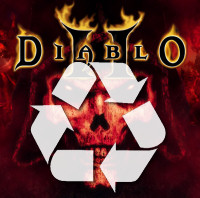 [ In this article, I’m testing a new image preview method. You can see a larger version of most images by hovering your mouse cursor over an image. Please let me know if you encounter any problems with this. — The Editor ]
[ In this article, I’m testing a new image preview method. You can see a larger version of most images by hovering your mouse cursor over an image. Please let me know if you encounter any problems with this. — The Editor ]
Breakthrough technology. Innovative gameplay. Revolutionary features. It seems that every new game claims to incorporate some aspect that players have never seen before. From a marketing standpoint, that’s understandable. We all want value for our money, and what better hook is there than offering a fresh experience? What better enticement is there than a style of game we’ve never seen before?
Wolfenstein 3D and Doom reshaped the gaming market almost overnight by giving players a chance to step into the skin of their character. When Diablo first hit the shelves, one of its biggest selling points was the nearly-unlimited replayability afforded by its randomly-generated maps and quests. And Neverwinter Nights boasts one of the strongest online communities around, due in part to the extremely powerful editing tools that allow users to create adventures every bit as polished as what the game shipped with.
These titles are all examples of truly unique, one-of-a-kind ideas dominating, and changing, the gaming world. Or at least, they would be, if the ideas behind them really were unique. But how many gamers remember titles like Ultima Underworld, Castle of the Winds, Mordor, and Shattered Light?
A Brave New Dungeon
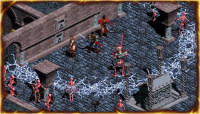 The PC Gamer demo of the original Diablo, released in 1996, got a lot of play on my family’s computer, even though it was limited to the first level or three of the opening area. When my brother finally bought the full version, it was quite some time before any other title was installed. To this day my father plays Diablo II almost exclusively, thanks to its ever-fresh dungeons and quests. Without this randomizing factor, would it have remained so attractive over the years? Probably not — look at any other old RPG or adventure title that features a linear storyline. But how innovative was this concept of an ever-changing game?
The PC Gamer demo of the original Diablo, released in 1996, got a lot of play on my family’s computer, even though it was limited to the first level or three of the opening area. When my brother finally bought the full version, it was quite some time before any other title was installed. To this day my father plays Diablo II almost exclusively, thanks to its ever-fresh dungeons and quests. Without this randomizing factor, would it have remained so attractive over the years? Probably not — look at any other old RPG or adventure title that features a linear storyline. But how innovative was this concept of an ever-changing game?
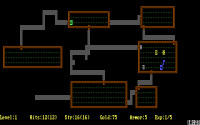 1983 saw the release of Rogue, the now-classic, ASCII-based dungeon exploration game. Step-by-step, the player descends through randomly generated levels populated by alphabet-letter monsters, seeking treasure and adventure. Clone upon clone of Rogue were distributed via bulletin board systems, and 1992 saw the production of perhaps the most famous one: Nethack. Nethack in turn inspired its own copy-cats and modifications, and quickly became a cultural icon amidst the ranks of computer geeks. Still text-based, though, Nethack continued to require quite a bit of imagination on the part of the player to envision the glorious quest for the Amulet of Yendor.
1983 saw the release of Rogue, the now-classic, ASCII-based dungeon exploration game. Step-by-step, the player descends through randomly generated levels populated by alphabet-letter monsters, seeking treasure and adventure. Clone upon clone of Rogue were distributed via bulletin board systems, and 1992 saw the production of perhaps the most famous one: Nethack. Nethack in turn inspired its own copy-cats and modifications, and quickly became a cultural icon amidst the ranks of computer geeks. Still text-based, though, Nethack continued to require quite a bit of imagination on the part of the player to envision the glorious quest for the Amulet of Yendor.
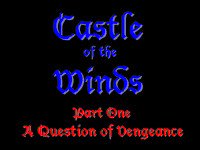 However, a few years previously (1989), SaadaSoft released what was possibly the first graphical, randomly-generated RPG: Castle of the Winds. With icon-sized tiles, minimal animation, and a partially mouse-driven interface, CotW added in the ability to save anywhere, making it a truly revolutionary game in its genre. (If you want to take a look at Castle, the original programmer decided in 1998 to let it go for free. You can find it here.)
However, a few years previously (1989), SaadaSoft released what was possibly the first graphical, randomly-generated RPG: Castle of the Winds. With icon-sized tiles, minimal animation, and a partially mouse-driven interface, CotW added in the ability to save anywhere, making it a truly revolutionary game in its genre. (If you want to take a look at Castle, the original programmer decided in 1998 to let it go for free. You can find it here.)
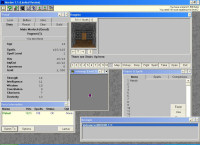 Then in 1995, David Allen released Mordor. Not only did Mordor generate new levels as you played, but it also incorporated classic roleplaying elements such as multiple-character parties and guild memberships. With Mordor, the traditional Rogue-style dungeon crawl was effectively being combined with features of the best paper-and-pen RPG’s to produce a well-balanced, startlingly fresh type of game.
Then in 1995, David Allen released Mordor. Not only did Mordor generate new levels as you played, but it also incorporated classic roleplaying elements such as multiple-character parties and guild memberships. With Mordor, the traditional Rogue-style dungeon crawl was effectively being combined with features of the best paper-and-pen RPG’s to produce a well-balanced, startlingly fresh type of game.
Then a year later, Diablo arrived — a fun, well-polished, professionally delivered game, to be sure, but not all that innovative in its gameplay.
It’s a 3-D World, After All
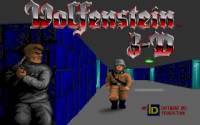 In my first year of college (1992), I started dating a lovely young woman — as compassionate and non-violent a person as you could ever hope to meet. She wasn’t much of a computer geek, but… well, nobody’s perfect. One weekend we made a trip to see my parents, and my dad showed her this new game that he was hooked on: Wolfenstein 3D. After showing her the basic movement keys, she sat down for an hour or two and had a blast (no pun intended) shooting Nazis. The shallow learning curve of those early first-person shooters had something to do with their fun factor — they were easily approachable, even for the inexperienced gamer. But more importantly, the level of sensory immersion was something that had never really been seen on a home PC before. It was now no longer a matter of “my character” being shot at. It had become more personal — the player was being inserted into the game in a very intimate manner, and it was very easy to be drawn in.
In my first year of college (1992), I started dating a lovely young woman — as compassionate and non-violent a person as you could ever hope to meet. She wasn’t much of a computer geek, but… well, nobody’s perfect. One weekend we made a trip to see my parents, and my dad showed her this new game that he was hooked on: Wolfenstein 3D. After showing her the basic movement keys, she sat down for an hour or two and had a blast (no pun intended) shooting Nazis. The shallow learning curve of those early first-person shooters had something to do with their fun factor — they were easily approachable, even for the inexperienced gamer. But more importantly, the level of sensory immersion was something that had never really been seen on a home PC before. It was now no longer a matter of “my character” being shot at. It had become more personal — the player was being inserted into the game in a very intimate manner, and it was very easy to be drawn in.
But for all the hype surrounding this new FPS genre (or “multi-level castle maze,” as Wolfenstein 3D was once described), there was one really big flaw — they weren’t truly three-dimensional. In fact, among gamers, the term “2.5-D” was adopted to describe them. For all the freedom and immersion they allowed, your character was limited to movement in two dimensions: forward/back and left/right. No jumping, no sloped walkways, no architectural variation at all. Right angles abounded, and the ceiling was always just above your head.
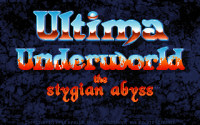 But in the months before Wolfenstein was released, Origin Systems gave the fans of its Ultima series a real treat — a truly three-dimensional world [Movement-wise, anyway –Ed.]. In Ultima Underworld: The Stygian Abyss, the player had full freedom of motion within truly cavernous environments. Jumping, levitating, flying, even the seemingly minor feats of looking up and down — all of these actions were possible and necessary. Creative wall structures and level layouts, ramps, sloped floors, and rivers to swim across all surpassed what Wolfenstein would have to offer when it was released a few months later. So why isn’t Underworld standing on a pedestal as the grandfather of the genre? Perhaps it wasn’t marketed as aggressively. Perhaps it was merely seen as another UltimaRPG rather than as a breakthrough first-person game. But the fact remains that the technology was there and was being used effectively to create three-dimensional worlds. It just took some time for the popular titles to catch up.
But in the months before Wolfenstein was released, Origin Systems gave the fans of its Ultima series a real treat — a truly three-dimensional world [Movement-wise, anyway –Ed.]. In Ultima Underworld: The Stygian Abyss, the player had full freedom of motion within truly cavernous environments. Jumping, levitating, flying, even the seemingly minor feats of looking up and down — all of these actions were possible and necessary. Creative wall structures and level layouts, ramps, sloped floors, and rivers to swim across all surpassed what Wolfenstein would have to offer when it was released a few months later. So why isn’t Underworld standing on a pedestal as the grandfather of the genre? Perhaps it wasn’t marketed as aggressively. Perhaps it was merely seen as another UltimaRPG rather than as a breakthrough first-person game. But the fact remains that the technology was there and was being used effectively to create three-dimensional worlds. It just took some time for the popular titles to catch up.
Choose Your Own Adventure
“Clichéd Game Review Quotes” Pop Quiz
1. I could _________ a better _________ than this in my sleep.
2. The ________ was great, but the ________ was non-existent.
3. I couldn’t follow the _______ at all. It must be ________.
Answers:
1. write; game
2. action; storyline
3. plot; European
Grade your papers and hand them in. How did you do?
 More to the point, how often have you heard, read, or spoken such sentiments? Well, with the release of Neverwinter Nights in 2002, BioWare had an instant winner on their hands. Not only was the storyline solid, but the game included an editor so that players could create and share their own adventure modules with other gamers. There is a thriving online community dedicated to developing and sharing these modules, and the game is (if possible) more popular now than it was when it was first released. A game initially with 40-60 hours’ worth of gameplay now has several hundred more than its developers originally included, and that amount continues to grow. Gamers have a right to be thrilled with this, and frankly, I’m surprised that nobody else has tried to copy its success so far. Sure, most FPS games have level editors and plenty of user-created maps, but there’s a vast difference between a map and an entire adventure. With the ability to add detailed scripted events, custom items, dialogue, and entire storylines, NWN continues to reinvent itself at the hands of its fans. But how revolutionary was this concept? Not as much as BioWare would like to think.
More to the point, how often have you heard, read, or spoken such sentiments? Well, with the release of Neverwinter Nights in 2002, BioWare had an instant winner on their hands. Not only was the storyline solid, but the game included an editor so that players could create and share their own adventure modules with other gamers. There is a thriving online community dedicated to developing and sharing these modules, and the game is (if possible) more popular now than it was when it was first released. A game initially with 40-60 hours’ worth of gameplay now has several hundred more than its developers originally included, and that amount continues to grow. Gamers have a right to be thrilled with this, and frankly, I’m surprised that nobody else has tried to copy its success so far. Sure, most FPS games have level editors and plenty of user-created maps, but there’s a vast difference between a map and an entire adventure. With the ability to add detailed scripted events, custom items, dialogue, and entire storylines, NWN continues to reinvent itself at the hands of its fans. But how revolutionary was this concept? Not as much as BioWare would like to think.
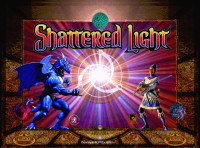 In 1999, Simon & Schuster Interactive released a horrible pile of…I mean, um, an innovative and original game by the name of Shattered Light. It was a unique approach to role playing games, with new ideas behind its character control and save-game handling, as well as…oh, forget it. It was, quite honestly, a piece of crap. Character control was horrible, saving and restoring was buggy, combat was nearly impossible to figure out, and the documentation was drastically less-than-adequate. But, and this is a big but, Shattered Light included a powerful “world builder.” Everything in this game was customizable — maps, weapons, monsters, dialogue, triggers, spells — you name it. What’s more, a lot of statistics were modifiable on the fly. That is, as your victi…err, friends…played through the adventure you made, you had the full power of a dungeon master to change things to your satisfaction as the game played out. Sound familiar? It was a great idea, and all it needed was a great game to go with it. Neverwinter Nights turned out to be that game. Shattered Light did not.
In 1999, Simon & Schuster Interactive released a horrible pile of…I mean, um, an innovative and original game by the name of Shattered Light. It was a unique approach to role playing games, with new ideas behind its character control and save-game handling, as well as…oh, forget it. It was, quite honestly, a piece of crap. Character control was horrible, saving and restoring was buggy, combat was nearly impossible to figure out, and the documentation was drastically less-than-adequate. But, and this is a big but, Shattered Light included a powerful “world builder.” Everything in this game was customizable — maps, weapons, monsters, dialogue, triggers, spells — you name it. What’s more, a lot of statistics were modifiable on the fly. That is, as your victi…err, friends…played through the adventure you made, you had the full power of a dungeon master to change things to your satisfaction as the game played out. Sound familiar? It was a great idea, and all it needed was a great game to go with it. Neverwinter Nights turned out to be that game. Shattered Light did not.
Everything New is Old Again
So what do we learn from this? Where do these new game ideas come from? Well, basically, developers steal them. What else is new? Go ask anybody who makes a living off of their creativity — writers, artists, musicians — and they will tell you unhesitatingly that their work is built off of everything that has gone before. All the books they have read, all the paintings they have studied, and all of the songs they have listened to have influenced they way they create. Game designers are no different. If they see a good idea out there, they’ll use it. Maybe they’ll improve on it, and maybe they won’t. Maybe, by the time they’re finished with it, it will be unrecognizable. But the influence will still be there, and it’s worthwhile to understand just where these ideas come from. These breakthroughs and revolutions may not be as innovative as the marketers would like us to think, but when they’re used in the right way, they can make for an unforgettable gaming experience.













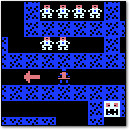

August 23rd, 2006 at 6:57 pm
A brilliant write up… The expanding pic thingy doesn’t seem to work properly in my Firefox on XP. I must admit though that I have pop-up blocking enabled…
August 23rd, 2006 at 7:26 pm
gnome, I’m glad you liked it — Eric did a great job.
The image hover effect works fine for me in Win XP with both Firefox (with pop-up blocking enabled) and IE. I also tested it in Win 2k with both browsers and Safari on Mac OS X (both are ok as well). Do you have Google Toolbar, by any chance? I think that thing blocks pop-ups more aggressively than plain ole Firefox by itself. You also have to have Javascript turned on for it to work. But anyway, if it doesn’t work you can still click on the images to get a bigger version in a new window.
August 23rd, 2006 at 8:07 pm
Thanks, gnome. I had a great time putting it together, and RedWolf does a great job of editing and laying out the whole presentation.
August 23rd, 2006 at 9:24 pm
That was an excellent write up, especially for retro-whores such as myself. Thanks for a great read Eric.
As far as the new popup thing, it works great for me although I had to allow Javascripting (I use NoScript extension in Firefox).
August 23rd, 2006 at 10:24 pm
Another genre-defining title for me was System Shock, the first one.
It put Doom to shame back then.
Of course Ultima Underworld I/II were some of the games I actually took the time to beat back then as well.
Great article.
August 24th, 2006 at 6:45 am
Thanks for the walk down memory lane. From the perspective of ‘aging-but-refusing-to-get-old gamer’, it’s a treat to see that someone (anyone!) remembers some of these things. My game archive at one point included every piece mentioned here; sadly, my Mordor media is now kaput. I was actually very late to the whole ‘Diablo’ thing, though. Rogue, CotW, and Mordor held me so thoroughly in their grasp that it took the release of Diablo II to pull me laterally into that series.
Shattered Light. *shudder* I have it, but I long ago added it to my ‘under no circumstances’ list because of the character saving system and corrupted file issues. NWN, as far as I’m concerned, will always be the groundbreaker there: what good is a ‘new idea’ if it doesn’t -work-?
But anyway, thank you. Wonderful article. 🙂
August 24th, 2006 at 11:22 am
Great article. But I would like to read also about my beloved ‘Dungeon Keeper’ – amazing piece of software, humour, details (each monster has it’s own behaviour, see it under zoom) and playability. I know people still playin’ it.
BTW. The whole ‘hover over pictures’ thing doesn’t work on my Opera. Maybe that’s better, I don’t like such features. 😉
August 24th, 2006 at 11:36 am
So does anybody actually like the hover-over-pictures feature? 🙂 Or should I just not bother with it in the future? Luckily, for those who don’t like it, it shouldn’t cause any trouble and I’ll always provide an alternative for readers to see a larger version of an image by clicking on it.
August 24th, 2006 at 11:57 am
Strange.. it works fine now… Can’t understand how or why… Oh, and it’s a very good idea RedWolf.
August 24th, 2006 at 1:03 pm
Dungeon Keeper was a great game, and actually had a well-implemented concept that a couple other titles have since used — possessing one of your creatures. Ghost master comes to mind. I haven’t played it very much, but I seem to recall that you could view things through the eyes of the vistims you were suposed to terrorize. Can anybody confirm this? Roller Coaster Tycoon 3 comes close, with its new Coaster Cam, but I know there are others out there that let you take over creatures and see the game through their eyes.
August 24th, 2006 at 7:30 pm
I personally dig it, but if it is pain in the arse to do every post, I can live without it =)
September 3rd, 2006 at 4:51 pm
Although I have never played these games, I was interested in Eric’s writeup. I found it very interesting and it did raise my curiosity about the interest my sons (Eric and his brother) and my husband have shown in these games. I found this article to be well written and quite informative and entertaining. Needless to say, I am quite pleased to say that “my son wrote this article.”
February 14th, 2008 at 3:42 pm
I just ran across this article in my search for information about Rogue! Thank goodness I found that there was a link to Castle of the Winds. My god! I remember playing that on some crappy old school computers.
February 27th, 2008 at 2:32 pm
There’s no such thing as an original idea anymore. Good article though.
August 11th, 2012 at 1:12 pm
Glad I stumbled across this article, it’s still a good read.